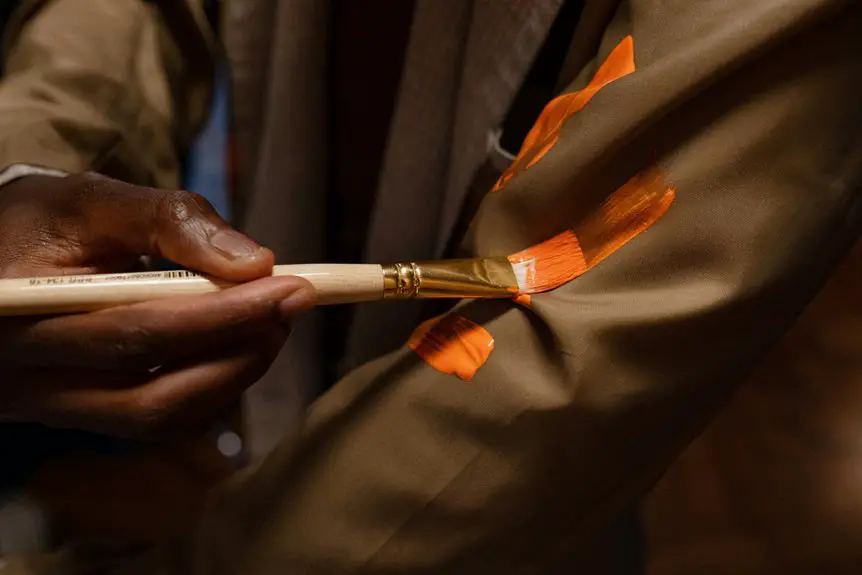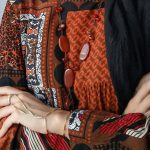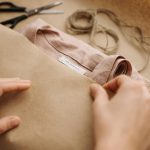To choose the right camel coating fabric, consider the fabric type—pure camel hair offers softness, while blends boost durability and affordability. Match fabric weight and warmth to your climate and layering needs; heavier for cold, lighter for milder weather. Think about texture, maintenance, and whether you want natural fibers for luxury or synthetics for easy care. Finally, pick fabric fitting your coat style and occasion. Keep exploring to uncover tips on sourcing and perfect fabric care.
Table of Contents
Key Takeaways
- Identify the fabric type—pure camel hair, blends, or synthetics—based on desired softness, durability, and budget.
- Match fabric weight and warmth to your local climate and layering preferences for optimal comfort.
- Consider durability and maintenance, choosing fabrics that balance wear resistance with ease of cleaning.
- Align fabric choice with your coat style, selecting heavier fabrics for structured coats and lighter ones for draped designs.
- Select formal or casual fabrics seasonally, opting for heavyweight wool blends in winter and lighter cashmere or wool for fall and spring.
Understanding Different Types of Camel Coating Fabrics
When choosing camel coating fabric, it’s important to know the main types available. You’ll typically find camel hair, camel wool blends, and synthetic alternatives.
Camel hair comes from the undercoat of camels and offers a soft, luxurious feel. However, it’s often blended with wool to improve durability and reduce cost, so check the fabric content carefully.
Wool blends maintain warmth and structure, making them ideal for tailored coats.
Synthetic fabrics mimic the look of camel hair but usually lack its natural breathability and softness.
Understanding these varieties helps you pick the right fabric for your needs, whether you prioritize comfort, durability, or budget.
Keep in mind, each type behaves differently during sewing and finishing, so knowing your fabric guarantees a successful project.
Assessing Fabric Weight and Warmth
Choosing the right camel coating fabric means paying close attention to its weight and warmth. These factors directly impact how cozy and practical your coat will be. Here’s what you need to evaluate:
Selecting the right camel coat fabric hinges on balancing weight and warmth for optimal comfort and function.
- Fabric Weight: Heavier fabrics provide more insulation but can feel bulky. Lighter options offer ease of movement but might lack warmth.
- Climate Suitability: Match the fabric weight to your local climate. Use heavier wool blends for cold winters and medium weights for milder seasons.
- Layering Needs: If you plan to layer underneath, opt for a lighter fabric. For a stand-alone piece, choose a weight that keeps you warm on its own.
Considering Fabric Texture and Feel
When selecting your camel coat fabric, pay close attention to its texture and feel.
You’ll want a fabric that’s soft and warm but also drapes well without feeling too heavy.
Balancing these qualities guarantees your coat looks great and feels comfortable all day.
Softness and Warmth
Softness and warmth play an essential role in how comfortable camel coating fabric feels against your skin.
When selecting fabric, you want to guarantee it not only looks good but also feels cozy during wear. Here are three key points to reflect upon:
- Fiber Quality: Higher-quality camel fibers tend to be softer and warmer, providing a luxurious feel without irritation.
- Weave Tightness: A tighter weave traps heat better, enhancing warmth while maintaining softness.
- Finish and Treatment: Some fabrics undergo finishing processes that soften the texture and improve thermal properties, making your coat more pleasant to wear in cold weather.
Weight and Drapability
Although warmth and softness are essential, the weight and drapability of camel coating fabric greatly affect how your coat moves and feels throughout the day.
When you choose a heavier fabric, your coat will offer more structure and a tailored silhouette, but it might feel less flexible. On the other hand, a lighter fabric drapes more fluidly, giving your coat a softer, more relaxed appearance, ideal if you want ease of movement.
Consider how you’ll wear the coat—if you prefer layering or need versatility, a fabric with good drapability will adapt better.
Also, test the fabric’s texture by handling it; it should feel comfortable against your skin without being too stiff or limp.
Balancing weight and drape guarantees your coat looks stylish while feeling comfortable.
Evaluating Durability and Maintenance Requirements
Evaluating durability and maintenance requirements helps you choose camel coating fabric that stands up to daily wear while fitting your lifestyle.
You’ll want fabric that resists pilling, tearing, and fading, especially if your coat will see frequent use.
Consider these three factors:
- Fabric Strength: Look for tightly woven textiles that maintain shape and resist abrasions.
- Cleaning Needs: Choose fabrics that are easy to clean, preferably machine washable or dry-clean-friendly, to save time and effort.
- Wear Resistance: Opt for materials that handle friction from backpacks or frequent movement without showing signs of wear.
Choosing Natural vs. Synthetic Fibers
When deciding on camel coating fabric, you’ll need to weigh the benefits of natural fibers against synthetic ones.
Natural fibers like wool offer warmth, breathability, and a luxurious feel, making them a classic choice. They’re also biodegradable, which appeals if you prioritize sustainability. However, natural fabrics often require more care and can be prone to shrinking or pilling.
Wool provides warmth, breathability, and luxury but needs careful maintenance to avoid shrinking or pilling.
Synthetic fibers like polyester or nylon, on the other hand, provide enhanced durability, wrinkle resistance, and easier maintenance. They often resist moisture and stains better, making your coat more practical for daily wear.
You can also find blends that combine the best of both worlds, balancing comfort and resilience.
Ultimately, your choice depends on whether you prioritize natural comfort or synthetic convenience.
Matching Fabric to Climate and Season
Three key factors—climate, season, and your daily activities—should guide your choice of camel coating fabric. You want a fabric that keeps you comfortable without overheating or leaving you cold.
- Climate: In colder regions, opt for heavier, tightly woven camel wool blends to trap heat. For milder climates, lighter fabrics with a looser weave offer breathability.
- Season: During winter, thicker, insulated fabrics provide warmth. For changing seasons like fall or spring, choose mid-weight fabrics that balance insulation and airflow.
- Daily Activities: If you spend a lot of time outdoors, durable, weather-resistant fabrics work best. For indoor or casual use, softer, more flexible materials enhance comfort.
Exploring Color Variations and Dye Options
Beyond choosing the right fabric for your climate and activities, the color of your camel coating plays a big role in its style and versatility. Traditional camel shades range from light beige to deep caramel, offering timeless elegance.
However, you can also explore subtle variations like honey, tan, or even muted grays to suit your personal taste. When selecting dye options, consider how the color will age and wear—natural dyes often provide richer tones and better longevity.
Keep in mind that darker shades might absorb more heat, while lighter ones reflect it. If you want something unique, some fabrics allow for custom dyeing, letting you tailor the coat’s appearance exactly to your vision.
Think about your wardrobe and where you’ll wear the coat to pick the perfect color balance.
Budgeting for Quality Camel Coating Fabric
Although quality camel coating fabric can come with a higher price tag, investing wisely guarantees you get durability, comfort, and timeless style.
Investing in quality camel coating fabric ensures lasting durability, comfort, and timeless elegance.
When budgeting, consider these three key points to maximize value:
- Fabric Composition: Prioritize natural fibers like wool, which offer warmth and longevity, over synthetic blends that may wear out faster.
- Supplier Reputation: Choose reputable suppliers who provide detailed fabric information and samples, ensuring you pay for genuine quality.
- Project Requirements: Align your budget with how often you’ll wear the garment. For frequent use, allocate more for premium fabric; for occasional wear, mid-range options might suffice.
Selecting Fabric Based on Intended Garment Style
When choosing your camel coat fabric, think about the style you want—whether it’s a structured formal piece or a relaxed casual look.
Different fabrics suit different coat types and occasions, so pick one that matches your wardrobe needs.
Also, consider the season to guarantee your coat stays comfortable and practical year-round.
Coat Types and Fabric
Since different coat styles demand varying levels of warmth, structure, and drape, you should choose your fabric accordingly.
Knowing the type of coat you want helps narrow down your fabric options.
- Classic Overcoat: Opt for heavier, tightly woven camel hair blends. They provide warmth and maintain a structured silhouette.
- Trench or Lightweight Coat: Choose lighter camel fabrics with a smooth finish to guarantee easy movement and a softer drape.
- Wrap or Drape Coat: Select supple, medium-weight camel wool that offers fluidity without sacrificing warmth.
Formal vs. Casual Fabrics
Because your camel coat’s fabric sets the tone, you’ll want to match it carefully to the garment’s style. For formal wear, choose smooth, refined fabrics like cashmere or fine wool that convey elegance and structure. Casual coats benefit from more textured or blended fabrics that offer comfort and versatility without sacrificing style.
| Formal Fabrics | Casual Fabrics |
|---|---|
| Cashmere | Wool blends |
| Fine wool | Tweed |
| Smooth, lightweight | Textured, durable |
Think about where you’ll wear the coat most. A formal coat calls for sleek, polished fabric that complements dressier occasions. For everyday wear, fabrics with more texture and resilience will keep your coat looking great longer while matching a relaxed vibe.
Seasonal Fabric Choices
Although fabric choice depends heavily on style, you should also consider the season to guarantee your camel coat offers the right balance of warmth and breathability.
Choosing the correct fabric secures comfort and functionality throughout the year. Here’s what to keep in mind:
- Winter: Opt for heavyweight wool or wool blends. These fabrics provide excellent insulation, keeping you warm in chilly temperatures without sacrificing style.
- Fall/Spring: Choose midweight fabrics like cashmere or lighter wool. They offer moderate warmth and are breathable enough for fluctuating temperatures.
- Summer: Lightweight fabrics such as linen blends or cotton are ideal. They keep you cool and comfortable, perfect for a stylish coat during warmer months.
Where to Source High-Quality Camel Coating Fabric
When you’re looking to source high-quality camel coating fabric, it’s important to focus on reputable suppliers who specialize in natural fibers.
Start by researching fabric mills and wholesalers known for their premium wool and cashmere blends. Online platforms like fabric-specific marketplaces offer detailed product descriptions and customer reviews, helping you assess quality before purchasing.
Don’t overlook local fabric stores or textile fairs, where you can feel the texture and examine the fabric firsthand. If you prefer sustainable options, seek out suppliers committed to ethical sourcing and eco-friendly production.
Always request fabric samples to verify color and weight. By choosing trusted sources, you’ll guarantee your camel coating fabric meets your project’s standards and durability requirements.
Frequently Asked Questions
How Should I Store Camel Coating Fabric to Prevent Damage?
You should store camel coating fabric in a cool, dry place away from direct sunlight. Keep it rolled or flat to avoid creases, and use breathable garment bags to prevent moisture buildup and protect against pests.
Can Camel Coating Fabric Be Used for Upholstery Projects?
You can use camel coating fabric for upholstery, but keep in mind it’s primarily designed for outerwear. It’s durable and warm but might not withstand heavy daily use like traditional upholstery fabrics do. Choose wisely!
What Are Common Allergens Associated With Camel Coating Fabrics?
Allergens in camel coating fabrics can sneak up like hidden thorns—common culprits include lanolin, dust mites, and chemical residues from processing. If you’re sensitive, test a small patch to avoid itchy surprises later.
How Do I Repair Small Tears in Camel Coating Fabric?
You can fix small tears in camel coating fabric by gently trimming frayed edges, applying fabric glue or an iron-on patch, and sewing with matching thread to reinforce. Always test a hidden area first for best results.
Are There Eco-Friendly Processing Methods for Camel Coating Fabric?
You won’t believe it, but eco-friendly methods like natural dyeing and low-water processing are transforming camel coating fabric production! By choosing these, you’re helping the planet while keeping your coat stylish and sustainable at the same time.
- How to Successfully Dye a Disc Golf Disc at Home - July 13, 2025
- Staining Techniques in Biology: The Role of a Single Dye - July 13, 2025
- A Comprehensive Look at the Low-Dye Foot Taping Method - July 13, 2025







